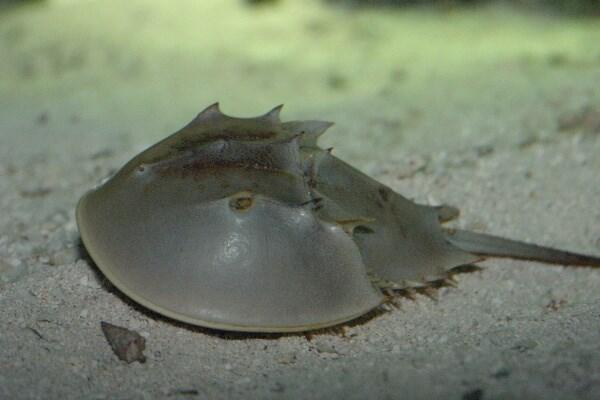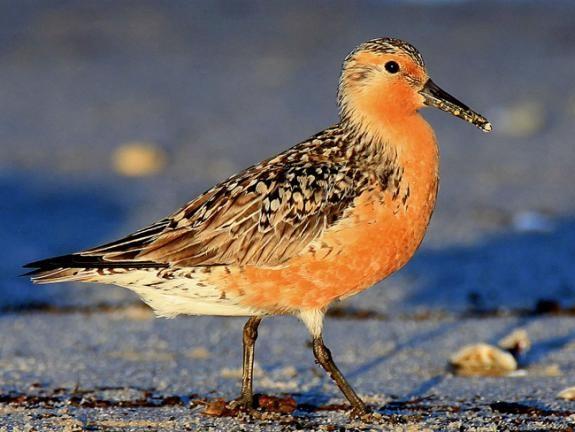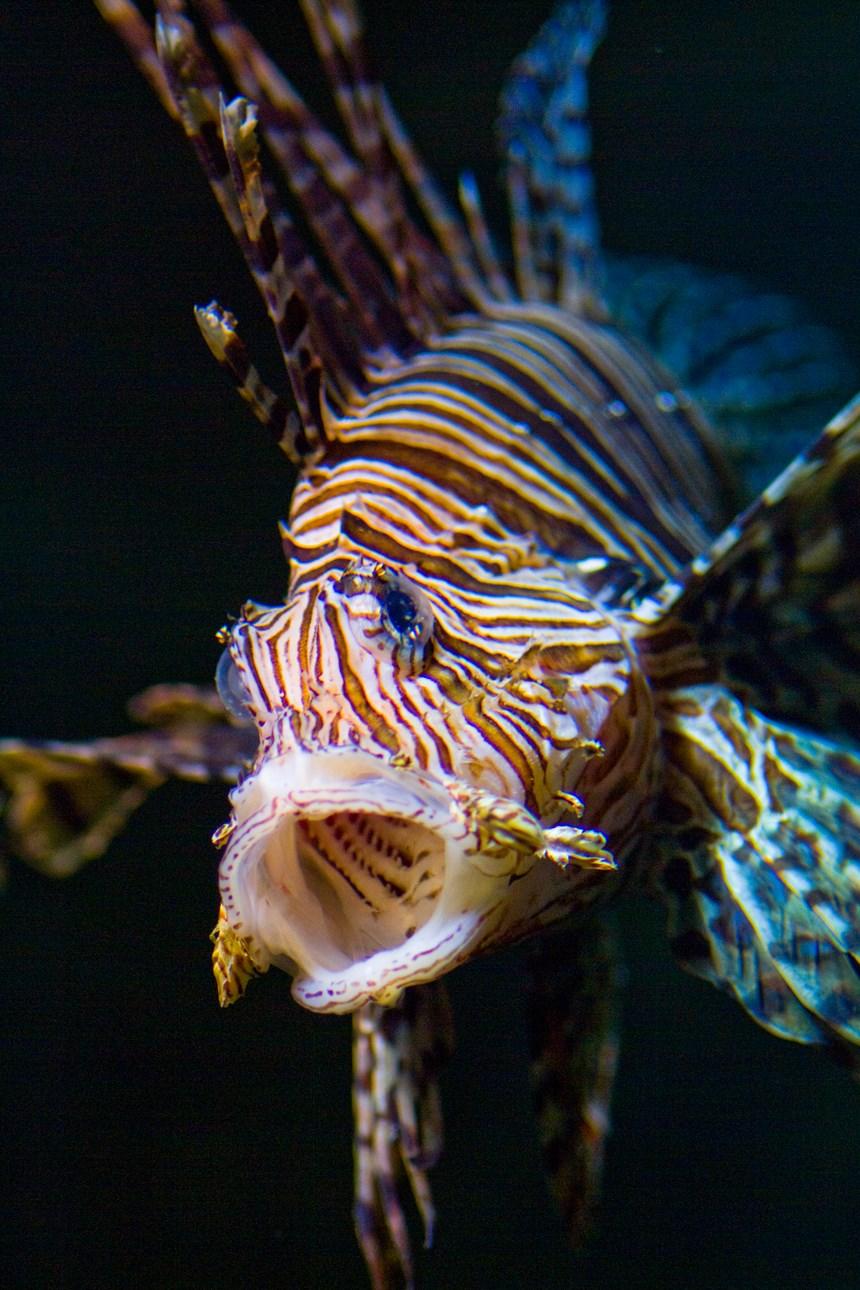
5 minute read
Red Knot
The Struggle for the Red Knot and the Horseshoe Crab

By Ryan Koch
Unknown to many, the Red Knot is a unique shore bird species found on beaches along the eastern coast. This bird feeds on small marine invertebrates, including crustaceans, snails, and bivalves. Its most important food source, however, is horseshoe crab eggs, which the bird depends on. This food source supplies the birds with extremely high amounts of energy. This energy is essential because Red Knots migrate great distances of 9,300 miles each year. Travelling almost halfway around the world, they fly all the way from the Arctic to the southern tip of South America in Tierra del Fuego. As a refueling stop, the majority of the birds congregate at the Delaware Bay, where most horseshoe crabs spawn to lay their eggs in May and June. It is estimated that approximately 90% of the entire Red Knot population can be seen at the Delaware Bay during this time of year, feeding on horseshoe crab eggs. These birds have depended on horseshoe crab eggs for years, as both species coexisted peacefully. Recently, however, that has not been the case. Overharvesting of horseshoe crabs by humans has drastically threatened the Red Knot population. Pharmaceutical industries often use horseshoe crabs for their blood, as it can be used to test for contamination in many types of drugs. Horseshoe crabs are different than most mammals due to their specialized immune system. This is a critical factor to the crabs’ survival, because they live in environments highly concentrated with bacteria. In order to protect themselves against harmful bacteria and viruses, horseshoe crabs have a special type of blood that binds to these pathogens and forms a clot. Catching crabs for their blood, however, poses a threat to the population. It is estimated that at least 15% of the horseshoe crabs die after being released from extracting their blood, but mortality rates could be higher. Other than harvesting horseshoe crabs for medical purposes, fishermen find horseshoe crabs to be exceptional bait for eels and whelk. This has been declared a threat to crabs, and in response, a moratorium was set in 2006 in New Jersey in order to control the population by preventing further catching of horseshoe crabs. The population has stabilized, but has not increased, most likely due to the harvesting for blood. There is current talk about allowing horseshoe crabs to be used for bait by fishermen, because some marine organisms only be caught with this special bait. Essentially, this high demand for horseshoe crabs has put unnecessary pressure on the Red Knot population. Over the past 30 years, the Red Knot population in the Delaware Bay has decreased by 70%, and just recently the United States Fish and Wildlife Service has proposed the species as “threatened.” With the likely demand for medicine and drugs to increase in the future, the demand for horseshoe crab blood will most likely increase as well. In order to save the Red Knot species from possible extinction, strict policy standards must be created in response to horseshoe crab harvest rates. With the recent destruction of horseshoe crab breeding grounds in the Delaware Bay from Hurricane Sandy, horseshoe crabs and Red Knots are fighting an uphill battle.
Sources:
http://www.nytimes.com/2013/11/27/opinion/a-bird-whose-life-depends-on-a-crab.html?_r=5& http://www.allaboutbirds.org/guide/red_knot/lifehistory http://www.nj.com/cumberland/index.ssf/2013/11/ us_fish_and_wildlife_considers_threatened_designation_for_red_knot.html http://www.nj.com/news/index.ssf/2013/01/the_crab_and_the_bird_moratori.html http://www.horseshoecrab.org/med/med.html http://www.goodeggnjny.org/migrating_shorebirds/
A Glimpse of St. Croix’s Environmental Status
By Wendy Chiapaikeo
Last semester I took part in a leadership course titled International Relations: Leadership for Sustainability in St. Croix. The assignments revolved around researching and learning about various aspects of the small territorial island to prepare us for the trip there. Over winter break we travelled to St. Croix, the largest of the three U.S. Virgin Islands. Initially, the most striking thing for me along with several of my peers was that there was no recycling in St. Croix or any of the Virgin Islands. Despite being a United States territory, there is not a single paper or plastic recycling facility on St. Croix or any of the other islands. Even so, plastic seemed to be used and disposed of quite heavily. Throughout the trip I constantly felt guilty for throwing plastics in the regular garbage. To experience the Cruzan culture and learn more about the island, we met with and heard from politicians, government officials, educators, and environmentalists. Amongst our guest speakers was William Coles, chief of environmental education with the V.I. Department of Planning and Natural Resources Fish and Wildlife Division, stood out to me particularly for the knowledge and passion he had for his job. Bill discussed the variety of challenges facing St. Croix’s environment such as the Caribbean Lionfish invasion, endangered species on the island, and limited resource supplies. Speaking with Bill one on one, I asked him how he handles these challenges and what strategy he finds to be the most effective in reaching out to people about the environment. Surprisingly, Bill replied with a quick and simple answer. Communicating with locals, regardless of whether he knew them or not, was the solution. By personally talking to people and listening to what they had to say, Bill was able to spread awareness, while also making them fell involved and a part of the community. For very complex problems, Bill had simple solutions and was taking small steps to make protect the island’s environment. The most recurring topic that almost every speaker discussed was the issue of energy. When we first arrived to our guesthouse, the hostess emphasized the importance of shutting off the lights and closing the air conditioner when leaving the room. At about 54 cents per kilowatt-hour, energy is very expensive. In comparison, energy in New Jersey averages to be about 14 cents per kilowatt-hour, according to the U.S. Energy Information Administration. High-energy prices are a high priority issue that branches off to negatively affect the economy in other sectors. St. Croix’s current economy is in need of a major stimulus. With tourism being the island’s main industry, there are opportunities in ecotourism to provide a boost in the economy. The island is home to many beautiful and historic attractions including Buck Island Reef National Monument and Salt River Bay National Historic Park and Ecological Preserve. These tourist sites have great potential to generate income in St. Croix, however, they must be cared for and maintained in good condition from repeated use.

Sources:
http://www.eia.gov/state/analysis.cfm?sid=VQ http://www.eia.gov/electricity/state/newjersey/index.cfm









